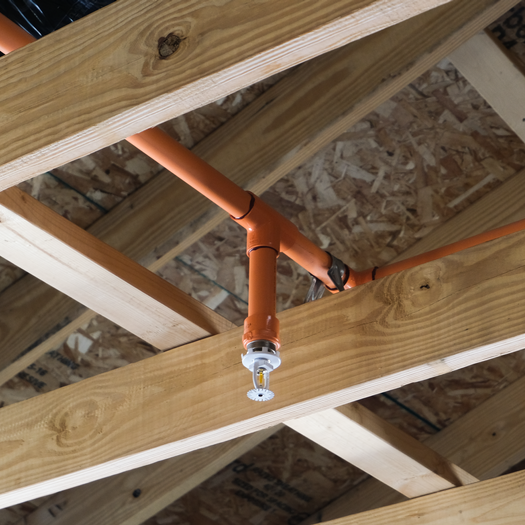
What is a Fire Sprinkler Backflow?
Backflow is when water flows in the opposite direction it is supposed to because of an imbalance in pressure. When there is a backflow in fire sprinklers, the water moves toward the water supply rather than the sprinkler head. It is important to prevent this because backflow can contaminate the public water supply causing health hazards as well as compromising the performance of the sprinkler.
What are Backflow Preventers?
Fire sprinkler backflow preventers, or sprinkler backflow valves, are devices used in the sprinkler line that prevents the water from flowing in the wrong direction. Fire system backflow preventers act as barriers, directing the water only toward the fire protection system and restricting it from reversing into the public water supply. Two common backflow preventer types include:
- Double-check valves: A Double Check Valve Assembly consists of two check valves and a shut-off valve between them. This creates a layer of protection and is low hazard fire application.
- Reduced pressure zone (RPZ): RPZ assemblies provide more protection for high-hazard applications. They have two check valves and a relief valve in between, creating a zone with reduced pressure to prevent backflow.
Legal Requirements for Commercial Application Inspections
Frequency of Inspections: According to NFPA 25, the frequency of sprinkler backflow valves may vary depending on their type and size. However backflow preventers should be inspected on an annual basis at a minimum and visually inspected on a weekly to monthly basis.
Testing: Backflow preventers are also required to be tested regularly to ensure their proper functioning. The testing frequency may vary based on the specific type and size of the backflow preventer. There are various types of tests that are required to be done, two of these tests are:
- Forward Flow Test – The forward flow test checks the ability of the backflow preventer to allow water to flow in the correct direction. The valves and components of the backflow preventer are checked to ensure they open and close correctly during the test. The test should be done at a designated flow rate and conducted according to NFPA standards. This test examines whether the system can get enough water supply in a fire condition.
- Backflow Performance Test – This test checks the performance of your backflow prevention devices to make sure that the water supply is protected from cross-contamination. The test is performed by sending higher-pressure water downstream of the backflow preventer to confirm if the device can prevent the reverse flow effectively.
Record Keeping: It is required that there are up-to-date records of all inspections, testing, and maintenance performed on backflow preventers. These records should be kept on file and made available for review by fire inspectors or authorities upon request.
Qualified Personnel: The inspection, testing, and maintenance of sprinkler backflow valves should be conducted by qualified and certified professionals with experience in backflow prevention systems.
Backflow Preventer Inspections with WSFP
At WSFP we conduct backflow preventer inspections that follow NFPA standards, local codes, and state regulations. Our team of experts will provide scheduled fire protection inspections that assess the operational condition of your system. Inspections can be scheduled on a weekly, monthly, quarterly, semi-annual, or annual basis depending on your specific sprinkler needs. Contact us today to learn more about our backflow preventer inspections.